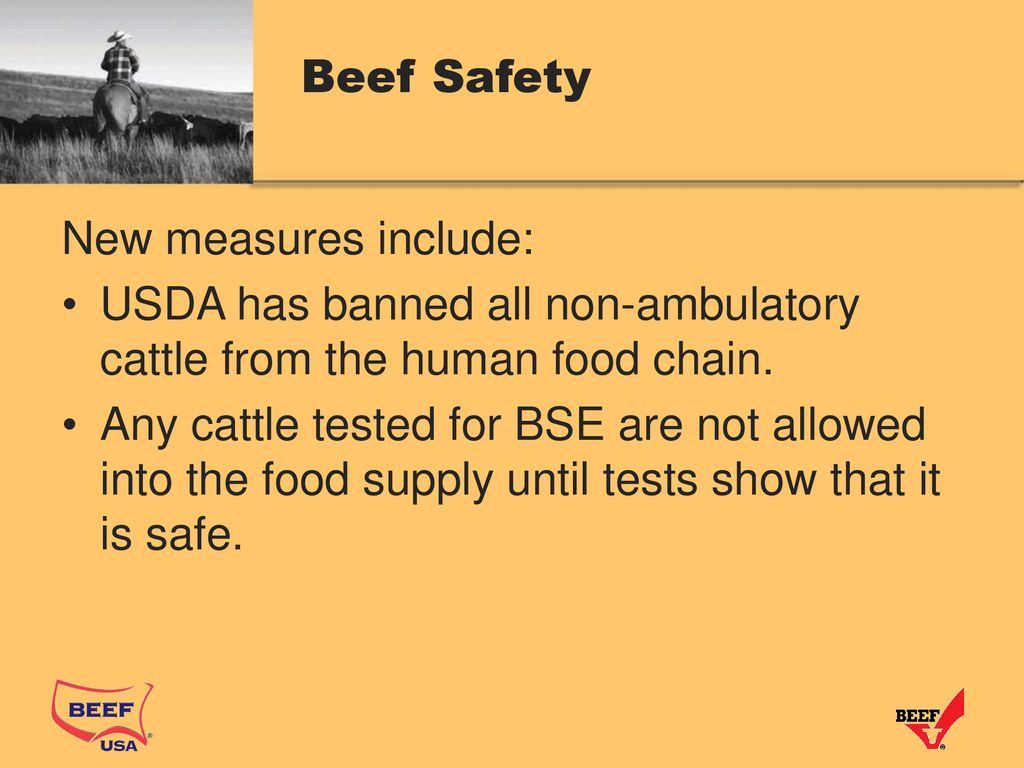Reference




OpenAI's Answer
To minimize the exposure of humans to Bovine Spongiform Encephalopathy (BSE), also known as Mad Cow Disease, the United States Department of Agriculture (USDA) has implemented several measures:
-
Banning High-Risk Materials: The USDA has prohibited the use of certain high-risk cattle materials in human food. This includes the brain, spinal cord, and other tissues known to harbor the infectious agent in cattle over 30 months of age, and any non-ambulatory cattle (cattle unable to walk) are banned from the human food supply to prevent potentially infected tissues from entering the food chain [Source].
-
Surveillance and Testing Programs: The USDA has initiated a comprehensive surveillance program to estimate the prevalence of BSE in the United States. This includes testing large numbers of cattle, especially those that are higher risk (e.g., older or non-ambulatory cattle) [Source].
-
Import Restrictions: There are stringent import restrictions to prevent BSE from entering the country via imported cattle and cattle products. Cattle from countries with known BSE cases are banned from entering the U.S., and there are tight controls on the import of animal feed ingredients that could pose a BSE risk [Source].
-
Feed Ban Regulations: The USDA, in conjunction with the Food and Drug Administration (FDA), has enforced regulations prohibiting the use of ruminant proteins (which could be contaminated with the BSE agent) in feed for ruminant animals, preventing the spread of BSE within cattle populations [Source].
-
Mechanical Meat Separation Ban: Mechanically separated meat (which could include high-risk tissues) is banned for use in human foods, ensuring that potential sources of BSE contamination do not enter the human food supply [Source].
These combined measures represent a multi-layered approach to safeguarding public health against BSE.
For further details, you can always check out more from USDA’s official page on BSE.
Follow Up
Related
How was BSE first described and linked to human disease?
What led to the dramatic decline in bovine spongiform encephalopathy (BSE) cases?
What factors contributed to the spread of bovine spongiform encephalopathy in cattle during the 1980
What safety measures prevent the spread of prion infections in ruminant feed?